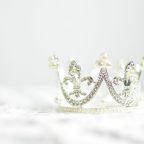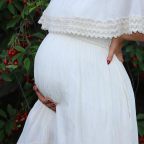
What Exactly Qualifies as Authentic Traditional Bavarian Wear?
Authentic Bavarian clothing stands out for its premium materials, traditional production, and handmade details. These outfits reflect a commitment to top-quality standards and sustainable practices that make them a preferable choice.
Traditional Bavarian wear includes Lederhosen for men and a dirndl for women. These outfits originated in the rural areas of Bavaria during the sixteenth century as a working attire. Today, people wear these traditional dresses at Oktoberfest and other cultural festivals as a regional pride.
While imitations and cheap Bavaria outfits are widely available, it is best to buy authentic ones. Choosing authentic German outfits honors the cultural heritage and provides exceptional value through durability and timeless style that never goes out of fashion.
Understanding high-quality Bavarian wear requires knowledge of historical origins, design elements, craftsmanship, and cultural significance.
How to Identify an Authentic Lederhosen?
|
Quality Factor |
Authentic Standard |
Identification Method |
|
Leather Type |
Full-grain cowhide or deerskin |
Thick, natural grain texture |
|
Tanning Process |
Vegetable-tanned |
Rich, natural color development |
|
Thickness |
2-3mm minimum |
Substantial weight and feel |
|
Flexibility |
Supple yet sturdy |
Moves naturally with the body |
|
Aging Properties |
Develops patina over time |
Color deepens with use |
Authentic lederhosen are made of real leather such as goat suede, cowhide, or deer skin. This leather type develops character over time and creates the valued patina that marks authentic pieces.
These outfits are tanned using natural methods and materials rather than modern chemical processes. This vegetable tanning is the most reliable method as it creates leather with a unique color and texture that improves with age. Chemically tanned leather lacks this aging quality and often appears artificial.
- Traditional Design Elements and Their Purposes
Bavarian men’s lederhosen come with classic features like suspenders, buttoned flaps, and traditional embroidery. The color is often natural, like browns or tans. But you can find them in other colors too. You will also see beautiful sewn handcrafted details.
These designs show things like edelweiss flowers, oak leaves, or Bavarian lions. Traditional Lederhosen men usually end just above the knee and come with suspenders to hold up the pants.
You will also find two side pockets, two knife pockets, and one at the back. Some leather shorts even have a front flap that can be opened, which is another old design part. Look closely at the stitching as it should be very neat and fancy.
- Fastening System and Fit
A genuine Lederhosen usually features traditional fastening systems with leather straps, horn buttons, etc. The authentic pieces offer a snug fit that molds to your body naturally with time. There is a drop front flat to fasten these leather breeches.
This flap is secured with a series of decorative horn buttons. It allows you to adjust how tight a pair of pants should be around the waist. You will notice that zippers are generally not part of authentic lederhosen. The side seams of the lederhosen legs have small buttons or laces. You can tighten or loosen the leg opening around the knee for a comfortable fit.
How to Identify an Authentic Dirndl?
|
Fabric Element |
Authentic Requirements |
Quality Indicators |
|
Bodice Material |
Wool, linen, or heavy cotton |
Natural fiber weight and drape |
|
Skirt Fabric |
Traditional patterns in natural fibers |
Regional color schemes |
|
Blouse Material |
Cotton or linen |
Breathable, comfortable wear |
|
Apron Fabric |
Silk, cotton, or linen |
Coordinated colors and patterns |
|
Lining Quality |
Natural fiber construction |
Proper fit and comfort |
An authentic dirndl consists of four parts, including a fitted bodice, a skirt, a blouse, and an apron. They are made of only natural fibers that provide comfort, durability, and a classic appearance. Wool bodices offer structure and warmth for cooler climates, while linen provides breathability for warmer weather. Heavy cotton represents a practical middle ground for general wear.
Traditional fabric patterns follow regional conventions with specific color combinations and motifs. Bavarian blue and white checks, floral prints, and solid colors in traditional palettes all qualify as authentic choices.
- Traditional Silhouette and Proportions
Authentic German dirndls create the traditional Alpine silhouette. The bodice fits snugly without being restrictive, emphasizing the natural waistline while providing appropriate coverage.
Traditional skirt lengths vary by region but authentic lengths fall between knee and ankle. Mini dirndl represents modern interpretations rather than traditional styles. Authentic lengths falls between knee and ankle length.
The apron serves both functional and decorative purposes in an original dirndl dress. Traditional aprons cover approximately half of the skirt width and feature ties that indicate marital status when worn correctly. These cultural elements differentiate women's authentic Bavarian dress from costume interpretations.
- Manufacturing and Design Details
The real dirndl follows time-tested manufacturing methods that ensure proper fit, comfort, and durability. Traditional boning techniques provide bodice structure without modern synthetic materials. Steel or whalebone alternatives maintain historical accuracy while meeting modern comfort standards.
Hand-finished details mark authentic construction quality. Buttonholes show hand-worked characteristics with slight irregularities that prove individual craftsmanship. Machine-perfect finishing indicates mass production rather than traditional methods.
Lacing systems on authentic dirndls use leather cords or sturdy cotton laces rather than synthetic materials. These laces thread through properly reinforced eyelets that can withstand regular adjustment without tearing or stretching.
- Bavarian Regional Variations
Upper Bavaria maintains the most widely recognized traditional styles, featuring rustic tones, hunting motifs, and durable construction. These high-quality dirndls reflect the region's connection to alpine activities and rural lifestyle.
Lower Bavaria emphasizes floral patterns and lighter colors in its traditional wear. The agricultural focus of this region influenced design choices toward more decorative elements and feminine details in dirndl construction.
Franconian dirndls come in unique color combinations and embroidery patterns that make them special. These differences reflect the distinct cultural history and geographical influences.
How to Recognize the Authenticity of Traditional Bavarian Wear?
Examine the stiching details carefully to identify authentic craftsmanship. Hand-stitched elements show slight irregularities that prove individual attention. Machine-perfect uniformity suggests mass production rather than traditional methods.
Material quality assessment requires understanding traditional fabrics, leather types, and hardware materials. Authentic pieces use substantial materials that feel appropriate for their cultural significance and intended durability.
Traditional wear patterns and aging characteristics help identify authentic vintage pieces. Genuine leather develops specific patina patterns, while fabric shows natural fading and wear consistent with traditional use.
Where to Buy Authentic Bavarian Outfits?
Find reliable online trachten brands with generations of experience to get authentic traditional Bavarian wear. These companies maintain traditional standards while adapting to modern sustainable practices and authentic detailing.
Regional specialty shops in Bavaria and Austria also provide access to authentic pieces with proper documentation and provenance. These retailers understand authenticity requirements and can guide customers toward appropriate choices.
How Much Does an Authentic Bavarian Attire Cost?
Authentic trachten are expensive due to quality materials, skilled labor, and traditional production methods. Genuine lederhosen from a reputed brand may cost around $400 to $1,200 or more.
Authentic dirndl pricing varies widely based on construction quality, fabric choices, and embroidery work. Simple authentic pieces start around$300, while elaborate ones with handwork can exceed $1,500.
The investment value of high-quality Bavarian clothing extends beyond initial cost. Premium construction ensures decades of wear, while cultural significance and craftsmanship often increase value over time.
Conclusion
Authentic traditional Bavarian wear represents a living cultural heritage that deserves respect and preservation. Understanding authenticity requirements helps maintain the integrity of these important cultural symbols while ensuring your investment honors Bavarian traditions appropriately.
True quality encompasses historical accuracy, regional characteristics, premium construction, and cultural significance. These elements combine to create garments that serve as genuine expressions of Alpine heritage rather than just costume pieces.
Whether you want authentic pieces for cultural participation, family heritage, or personal appreciation, understanding these authenticity standards ensures your choices contribute to preserving and honoring traditional Bavarian culture for future generations.













